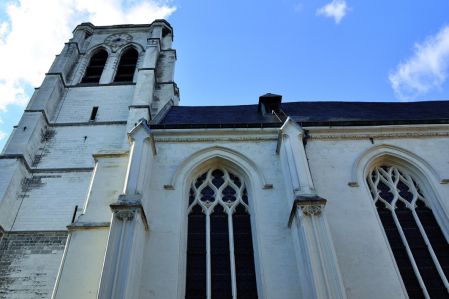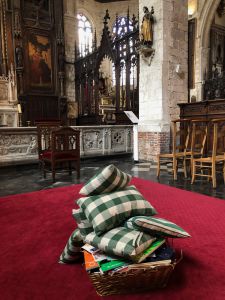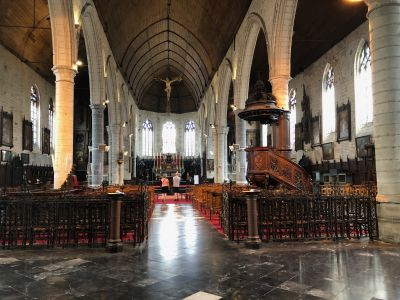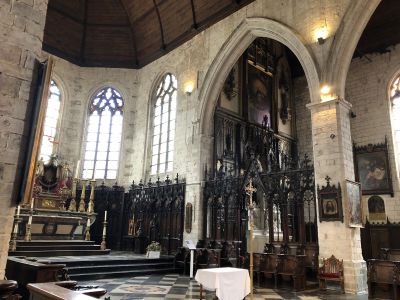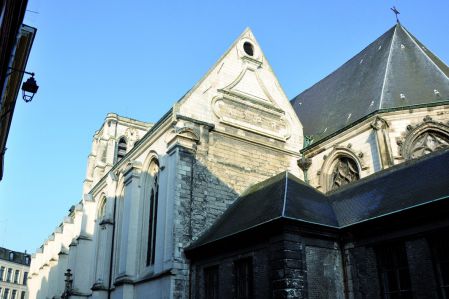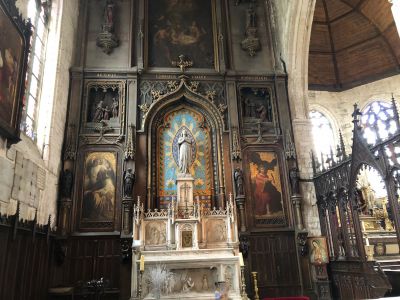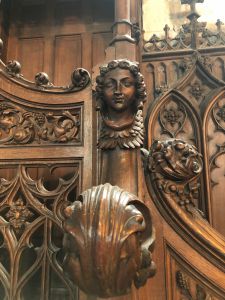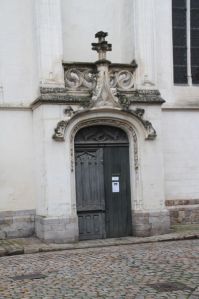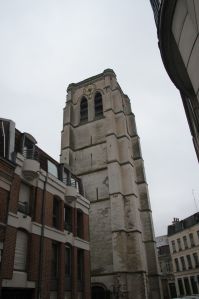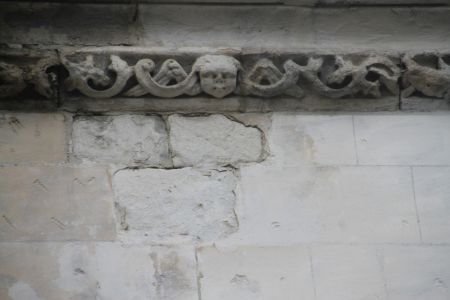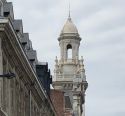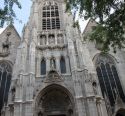Church | XIII-XV-XVIII | | Catholic Church




Map
Opening hours
01 January - 31 December
Mon -
Tue -
Wed -
Thu -
Fri -
Sat 13.30 - 17.30
Sun 10.30 - 11.30
06 July - 01 September
Mon
Tue
Wed 13.30 - 17.30
Thu
Fri
Sat 13.30 - 17.30
Sun
School holidays
Wednesday to Saturday : 1.30 pm - 5.30 pm (except 25/12 & 01/01)
Guided tour
Religious offices
Description
Closed in the 20th century due to danger of collapse, it was finally saved and restored during the 1960’s and classified Historical Monument in 1991.
The very sober exterior, only decorated by a frieze under the cornice, keeps its original style of flamboyant gothic architecture in spite of enlargements during the 15th, 16th and 18th centuries.
The architecture of the church, without transepts, shows all its capacity inside. It is a “hallekerke”, three luminous naves, of the same height and width more or less.
Its Flemish gothic architecture particularly valorises its furnishings, such as the four paintings attributed to Gerard Seghers, Flemish painter of the beginning of the 17th century, or the classic furnishings of the 18th and 19th century.
One of the major works of Peter-Paul Rubens “The martyr of St. Catherine” was to be found over the main altar, and is now to be found in the Beaux Arts Museum of Lille.
It is also in this church, between the Revolution and the construction of the Cathedral of Lille, that the statue of Our Lady of the Trellis was kept. This church is worth a visit and is not lacking in surprises, such as the stone coffin hidden under the altar of St. Joseph, or the cloister where six young women lived voluntarily cut off from the world.
Photos
Remarkable elements
Stalls
These neo-Gothic oak stalls were carved in the second half of the 19th century by the Buisine-Rigot workshops in Lille. They were designed to accommodate the clergy, altar boys and members of the church's fabric. Their distinctive feature is the representation of 72 carefully sculpted saints.
These figures fall into several categories:
- Locally venerated saints, such as Saint Waudru, founder of the Abbey of Mons, or Saint Humbert, monk and first abbot of Maroilles;
- Emblematic figures in national hagiography, such as Saint Geneviève, patron saint of Paris, or Saint Rémi, famous for having baptised Clovis;
- Saints who founded religious orders, such as Saint Benedict and Saint Vincent de Paul;
- Great doctors of the faith, like Saint Thomas Aquinas.
In front of this veritable gallery of holy figures, take the time to observe the details and try to recognise them all.
Funerary monument to Pierre le Machon, known as Le Sauch
This high relief in polychrome limestone dates from 1479. At this time, the Tournai workshops were producing many small funerary monuments, which were very common in the region.
This one is dedicated to Pierre le Machon, known as Le Sauch (or ‘the Old Man’), his wife Jehanne de Courtray, and their son, Pierre le Machon, known as ‘the Young Man’. The deceased are depicted kneeling, accompanied by their patron saints: Saint James the Greater, Saint Peter, Saint John the Baptist and Saint Catherine. All are placed around a crowned Virgin and Child. The work as a whole is extremely fine, and stands out for the realism of its features. However, it was damaged during the French Revolution.
The little organ
This is the oldest organ case in Lille, dating from 1644. The instrumental part was completely rebuilt in 1884 by Pierre Schyven of Brussels.
Doctors of the Church’ paintings
These four oil paintings date from the first half of the 17th century. They were painted by Gérard Seghers, an Antwerp painter and contemporary of Rubens.
- Saint Augustine, recognisable by his mitre, crosier and cope, is shown seated, writing on a table;
- Saint Gregory the Great, wearing a red skullcap, is writing on parchment;
- Saint Jerome, wearing a red cloak, is shown reading;
- Saint Ambrose, also seated, is wearing a cope and engrossed in his reading.
Nearby
Circuit
In the footsteps of Natalie Doignies

The founder of a religious congregation dedicated to helping the poor out of poverty, she left her mark on the religious buildings of Lille...



